The Victorian era’s costume is still popular these days—many movies, fiction, and art show some influence of the Victorian era. The Victorian Era started with the accession of Queen Victoria. Her reign began on 20 June 1837. The Victorian era lasted around 63 years and seven months. It ended with the queen’s death on 22 January 1901.
Click here if you are looking for a Victorian-inspired dress for yourself!
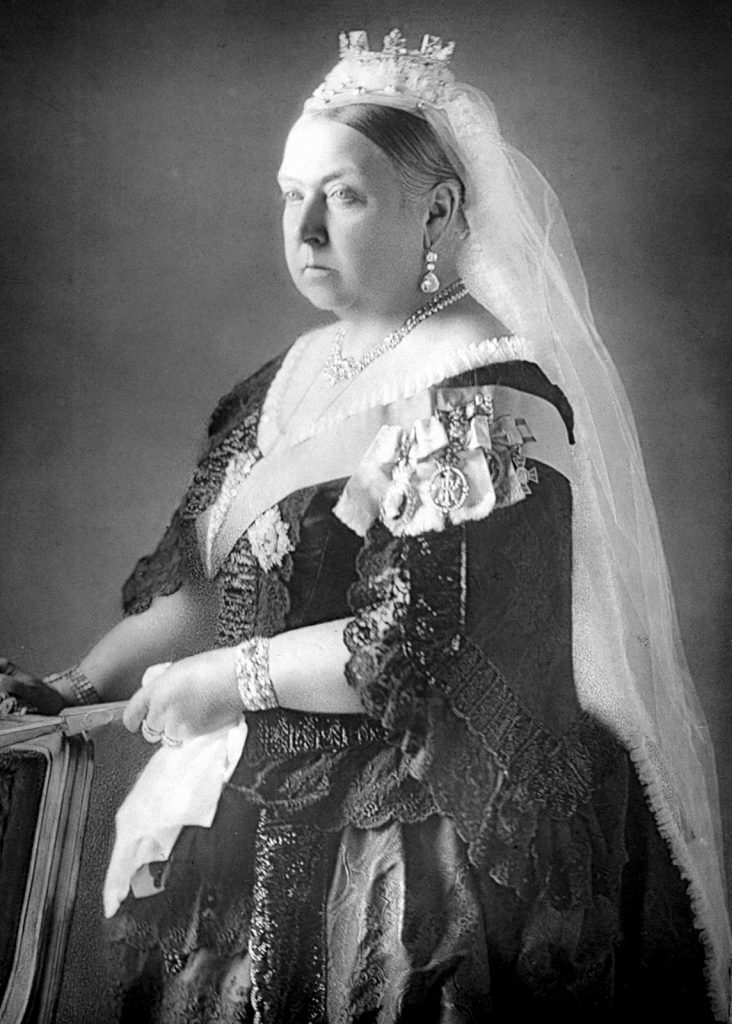
Earlier in the era, the British empire developed sewing machines and synthetic dye. This helped the Victorian costume to grow to its full potential. Because of the sewing machine, people were making costumes a lot quicker. The design got more exaggerated and detailed. Most of the costumes were very well designed and aesthetic. People are still curious about the Victorian costume to this day.
Victorian Costume
When it comes to Victorian Costume, people always think about women’s dress. The dress of Victorian upper-class women went through a lot of changes. Those dresses were a symbol of wealth at that period. The upper-class men also wore luxurious dresses. Like women, Victorian men’s clothing also went through some changes every decade. The rich kid dresses were much more casual.
Most of the time, people forget about the costume of working-class Victorian people. The victorian era was a class-based society. This was visible from the clothing choice of the rich and poor.
For better understanding, we have separated the costume choice for the rich and poor. Both sections talk about the costume of Victorian women, men, and children.
Upper-class people’s costume
During the Victorian era, the clothes were a symbol of social class. People could easily determine one’s social status just from their clothes. The upper and middle-class people wore expensive, exaggerated costumes. The costume design gave priority to aesthetics and elegance. For that reason, their clothes were not practical.
In these following paragraphs, we will talk about men’s and women’s costume changes over the decade. We will also talk briefly about rich children’s clothing.
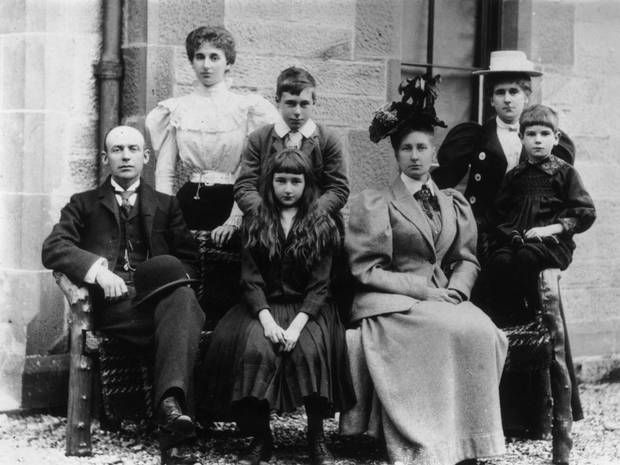
Victorian Women’s Costume
During the Victorian era, the British Empire went through the industrial revolution. As a result, women started to work in the domestic sphere. Many women gave up work entirely after their marriage. Almost all upper-class households had houseworkers. They did all the works for those rich households. Because of that, rich women led a very sedentary life.
The costume design of upper-class women evolved based on their sedentary life. The costumes were heavy, voluminous, and uncomfortable. The victorian shoes and hat also followed the same design pattern. Throughout the decade, women’s dress had more or less the same parts. But the design of the dresses changed continuously.
Dress
For most of the Victorian era, women dress had the same pattern. At first, the dress seemed like a one-piece dress. But the upper and lower part of the dress were separate pieces. Women wear a tight corset over a bodice or chemisette on the upper body. For the lower body, they wore a skirt over a special undergarment like a crinoline or bustle. The dress set always had the same set of items. But the design varied from decade to decade. Each decade gave a new look to the women’s costume.
Parts of Dress
As said earlier, women’s costume went through a lot of changes in design. But the essential components were the same. For the upper body, women used bodice, chemisette, and crinoline. For the lower body, they wore a crinoline or bustle under a skirt. Some women also used some false sleeves. Most women used some of these following parts as their complete dress set.
Bodice
The bodice was a favorite piece of clothing during the Victorian era. The bodice of that era covered form the neck to the waist. The neckline and the waistline varied from decade to decade. Much of the Victorian era, the neckline was low. At the end of the era, the neckline started to get higher. Victorian women wear bodice as part of their two-part dress. The bodice was connected to a crinoline or skirt by hooks and eyes.
Some women wore high neckline bodice with the day dress. And they wore low neckline bodice with evening dress. Both types of bodices used the same crinoline. This allowed them to achieve a different look in the morning and evening.
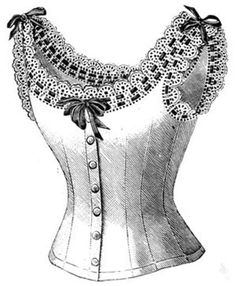
Bodice remained popular in Europe during the 16th to 18th centuries. The began to lose their popularity at the end of the Victorian era. Nowadays, people only use bodice to emulate Victorian costumes. It is also popular in some rural areas of Europe.
Chemisette
During the Victorian era, some women wear a chemisette under their corset. A chemisette is a piece of clothing that helps to fill the front and neckline of other clothing. The Victorian chemisettes were linen or cotton chemisette with day dresses. They had almost a blouse or shirt like appearance. They covered the neckline without adding extra bulk to the waist or upper arms. The chemisette used by upper-class women was different from poor women. Their chemisette had numerous decorations with tucks, lace, and embroidery. Some chemisette had a matching false sleeve.
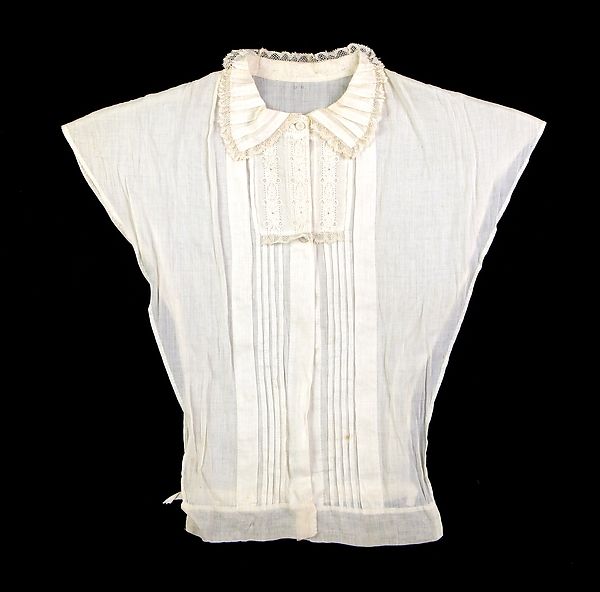
Corset
The corset was the centerpiece of Victorian dresses. During the Victorian era, women thrived for having an hourglass figure. The ideal body shape for women was a very tiny waist with large hips. To achieve these looks, women wore a tight corset over a bodice. This created an illusion of a tight waist with a wide bottom.
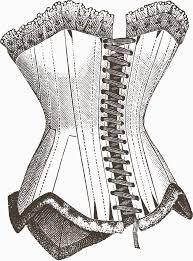
Some women used corset to shape their waist to their liking. Many women during that era used corset as a waist trainer. These corsets caused a permanent change to the women’s body. Some of them achieved a similar shape of the corset by using them for a long time. It may seem cruel in modern times. But during that era, that was the norm and fashion trend. And many women willingly used corset to train their waist. Corset remained popular during the whole Victorian era. Some people blamed corset for women’s health problems. But it did not have any effect on its popularity.
Sleeve
During the Victorian era, false sleeves were trendy. Engageante or false sleeves were easy to remove or restitch with the bodice. There were a few varieties of this sleeve. They were made from different materials like lace, linen, or lawn. Women wore these under their sleeves. Most of them are at least elbow length. These false sleeves remain popular, more or less during the whole era. They became very popular when a bell-shaped day dress came into the scene.
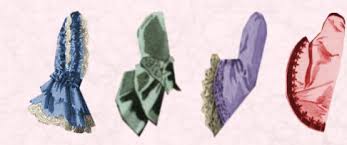
Crinoline
Crinoline was a part of Victorian women’s costume from the beginning. Crinoline is a beehive-shaped undergarment. In a crinoline, there were layers of petticoats woven from horsehair. Most women’s crinoline had at least six layers of petticoats. This unusual design choice made the crinoline heavy. Some crinolines were up to 14 pounds.
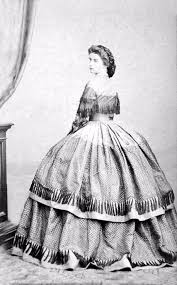
This heavy layered design made wearing a crinoline uncomfortable. This design restricted women’s movement. Women used crinoline from the beginning of the era to most of the 1850s. Crinoline lost its popularity after the invention of caged crinoline.
Caged Crinoline
Compare to crinoline; the caged crinoline was a step in the right direction. From outside, it had a similar appearance of a regular crinoline. But its interior design was very different from crinoline. The interior had a steel hoop-like shape. That hoop gave the bell-like shape of the caged-crinoline. Most of the caged crinoline had a steel structure. But some crinoline had rubber of whalebone structure. This hoop design also lessened the layers of petticoats. As a result, the crinoline became way more comfortable. Because of the thick hoops, the women had a lot of legroom to move.
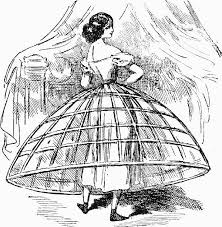
In the beginning, the caged crinoline was much thicker than the regular crinoline. But in the late 1860s, they began to lose their size. The crinoline got smaller at the waist, flat at the front. The rear got more voluminous. In the early 1870s, the bustle took the place of caged crinoline.
Bustle
It is hard to pinpoint the exact time bustle came to Victorian fashion. They made their way during the late 1860s and early 1870s. Bustle had a much smaller silhouette than crinoline. The bustle was a padded undergarment. It added fullness in the rear of the dress. Bustle supported the drapery at the back of a women’s attire.
The bustle had a very different look than the caged crinoline. The front and the side of the bustle was flatter. The rare of the bustle was padded. It created the illusion of an exaggerated rear end. Bustle went through some changes during the 1870s and 1880s after that bustle started to lose popularity.
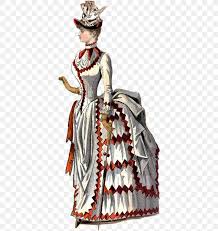
Skirt
Some people mistakes crinoline or bustle as a skirt. But they were a type of undergarment to give the silhouette a specific look. Women’s skirt during that era was a one or two-layered skirt. The length of the skirt varied from decade to decade. Most of the women wore skirts at the end of their natural waistline. The skirt design also changed during the whole era. Some shorter skirts had a similar shape like the crinoline, whereas longer skirt featured a train design.
Changes in Women’s Costume
The historians documented a lot of information about the Victorian era’s women’s clothing. There is a lot of information about women’s clothing from that era. Victorian women’s clothing went through a lot of changes during the 63 years. Each decade saw some significant changes to women’s clothing.
The dress pattern remains similar throughout. But the design of the dress parts changed over the years. The most significant changes occurred in the neckline, boning of the corset, sleeves, in the upper body. The lower body silhouette also went through significant changes. In these following paragraphs, we will talk about design changes throughout the decade.
Neckline
neckline design changed a lot from the 1830s to the 1890s.
In 1837, women wore a bertha. A bertha is a low shoulder neckline. It exposed women’s shoulders. Sometimes, the bertha had a trim with 3-6 inches deep flounce. Sometimes, the neckline had draped with several horizontal bands of fabric pleats. But only upper-class women wore these low neck bertha. Poor women are not allowed to show much of their skin.
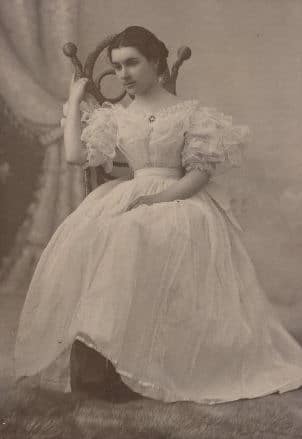
During the 1840s, the neckline stilled remained low. They neckline got slightly curved instead of remaining straight.
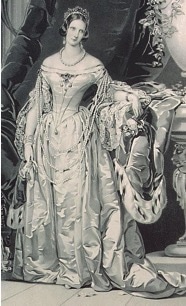
In the 1850s, the neckline dropped even lower. The shape of the bodice remained the same. The neckline then was a short cut V-shaped neckline. Because of the low neckline, women used a chemisette to prevent exposure with the day dress.
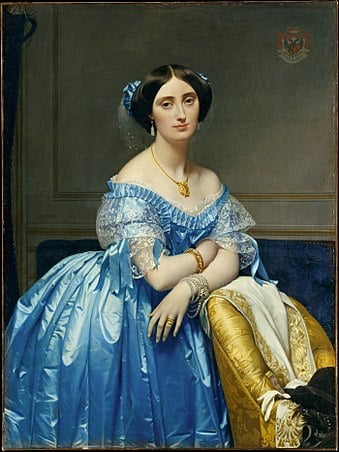
During the 1860s, women used both high and low neckline dresses. They used to wear high neckline dresses as a day dress. But they wore low neckline dresses during the evening.
In the 1870s, there was no fixed neckline for women. Women wore both high and low necklines. The neckline choice varied from women to women.
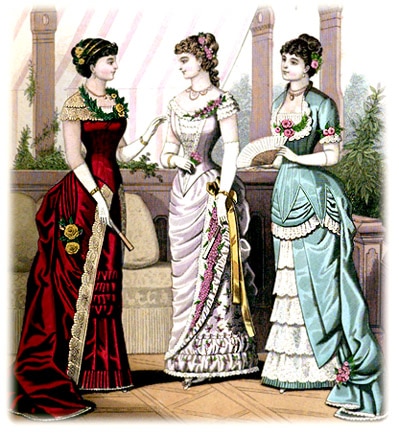
During the 1880s and 1890s, Victorian women’s clothing started to become more practical. As a result, the neckline got higher.
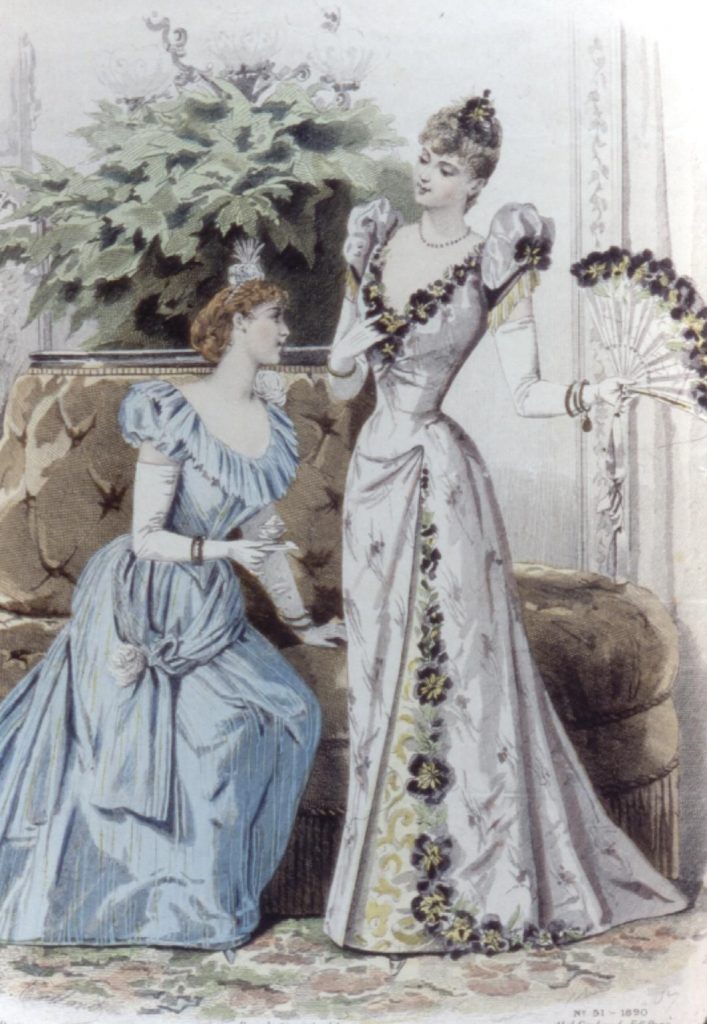
Sleeves
Like neckline, sleeves also went through some changes. At the beginning of the Victorian era, the sleeves were tight. It complimented the tight fit dress of that time. But this tight sleeves restricted women’s hand movement. That is why false sleeve took their place.
In the 1840s, sleeves changed a little bit. Then women wore dresses with collapsed sleeves.
During the 1850s, the false sleeve got popular. The false sleeves were a special kind of undersleeves. They were straightforward to use. Women could easily attach them with their bodice. They were also easy to remove. This ease of use made them very popular during the Victorian era.
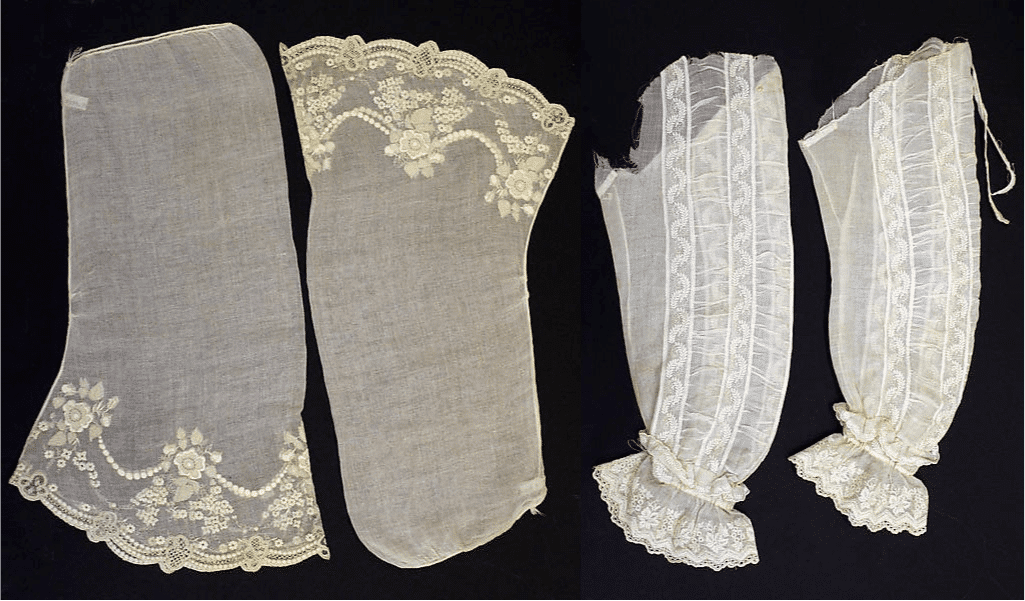
There were also some bell-shaped sleeves during the Victorian era. Women used some sorts of false sleeves with bell-shaped sleeves. These false sleeves were worn under the bell-shaped sleeves as a day dress.
Boning of Corset
The boning of the corset remained more or less similar during the whole era. The shape of the corset did not change that much. The boning was flexible. They were made from giant reeds and whalebone. The hourglass shape of the boning was the only type of boning available back then. At that time, upper-class women went for a tiny waist and broader bottom look. So, no one had any problem with the boning shape. This hourglass shape of the boning also helped many women to train their waist.
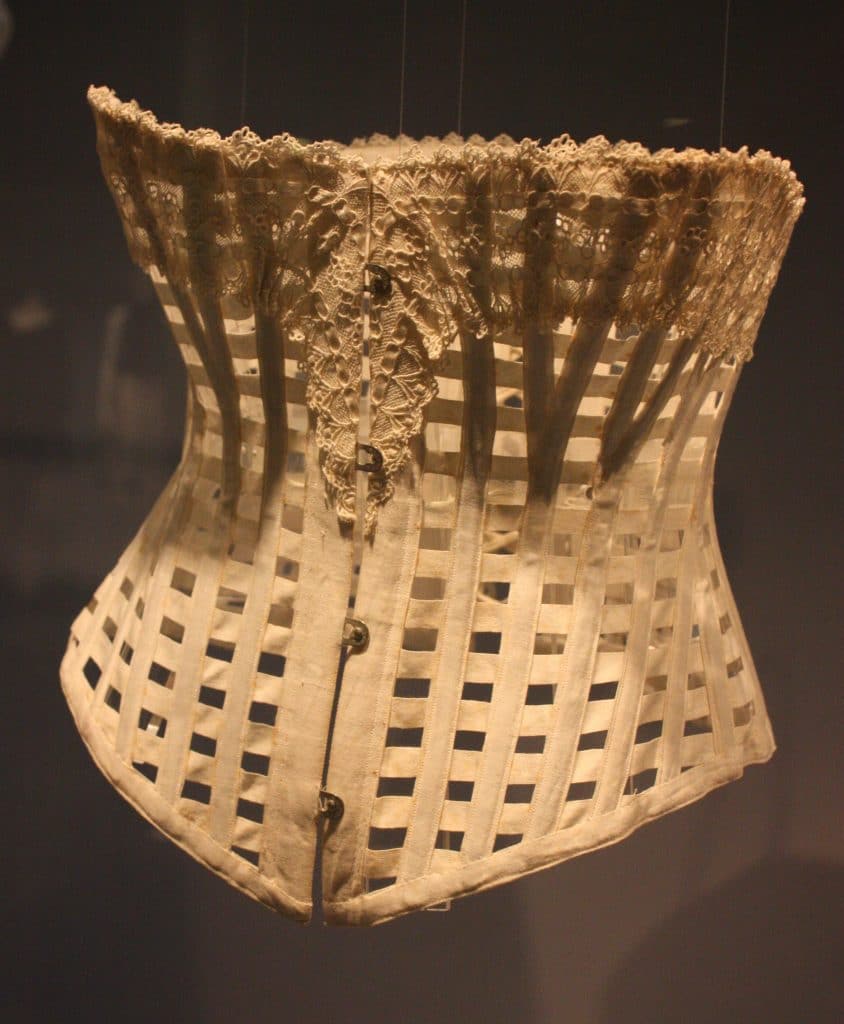
During the 1880s, corset started to lose its popularity. Many women stopped wearing a corset. At the end of the 1890s, the half corset came to the market. But that did not become as popular as the regular corset.
Silhouette
During the Victorian era, the silhouette of the lower body had gone through some changes. The type of lower body undergarment changed three times. The lower body silhouette was crinoline, caged crinoline, and the bustle.
Women wore crinoline from the beginning of the era. Complete crinoline with a tight corset was the first choice for many women. The crinoline was multiple layers of petticoats. With multiple layers, the crinoline got a beehive-like shape. They were bulky and uncomfortable. Crinoline remained in use during the 1830s, 1840s, half of the 1850s.
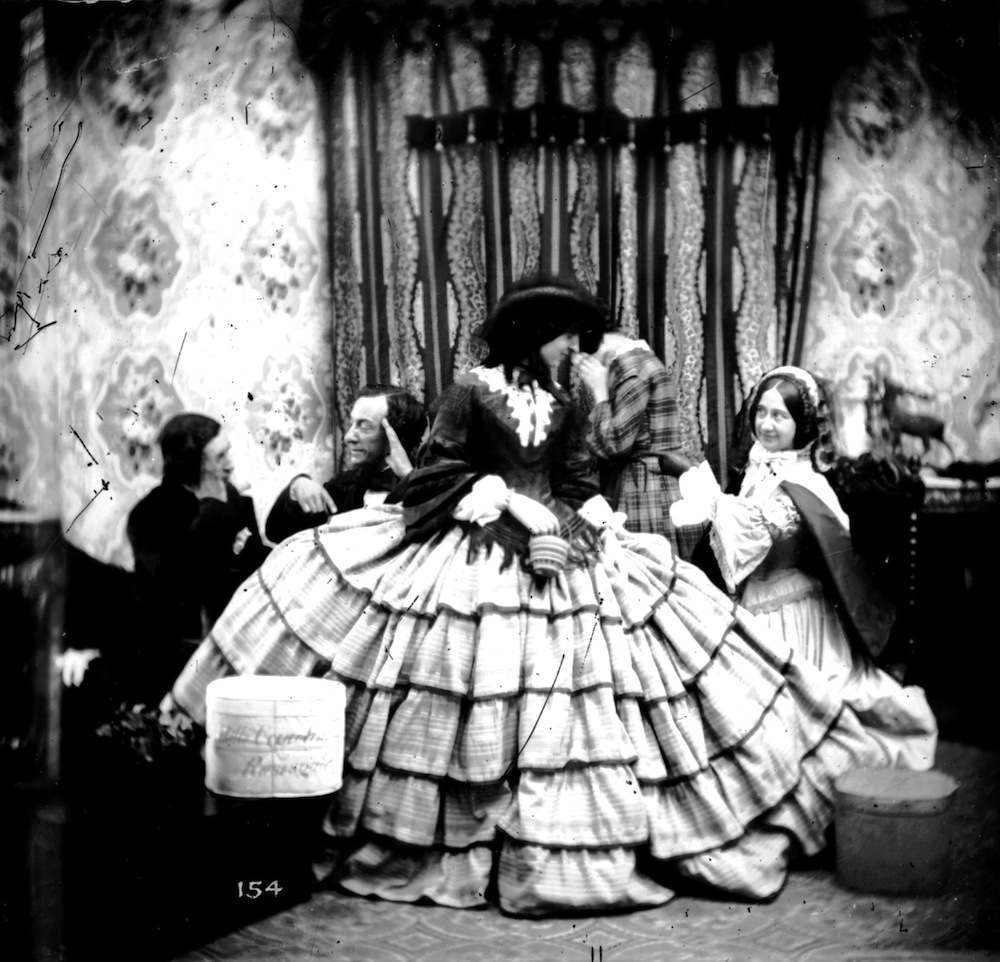
In 1856, caged crinoline took the place of regular crinoline. The caged crinoline had a hoop-like steel structure. The caged crinoline made women’s undergarments much lighter. Women could easily move with them. In1860s, caged crinoline got flat in the front and voluminous in the back.
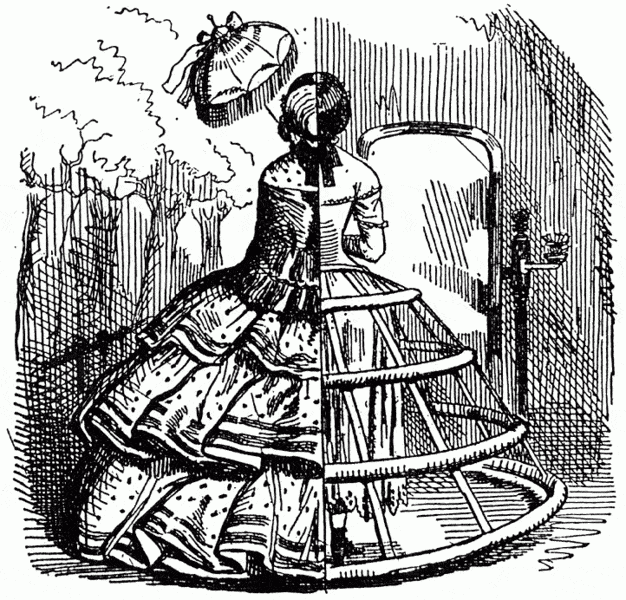
During the 1870s, the bustle became popular. As a result, it took the place of caged crinoline. Bustle wear flatter from front and side.
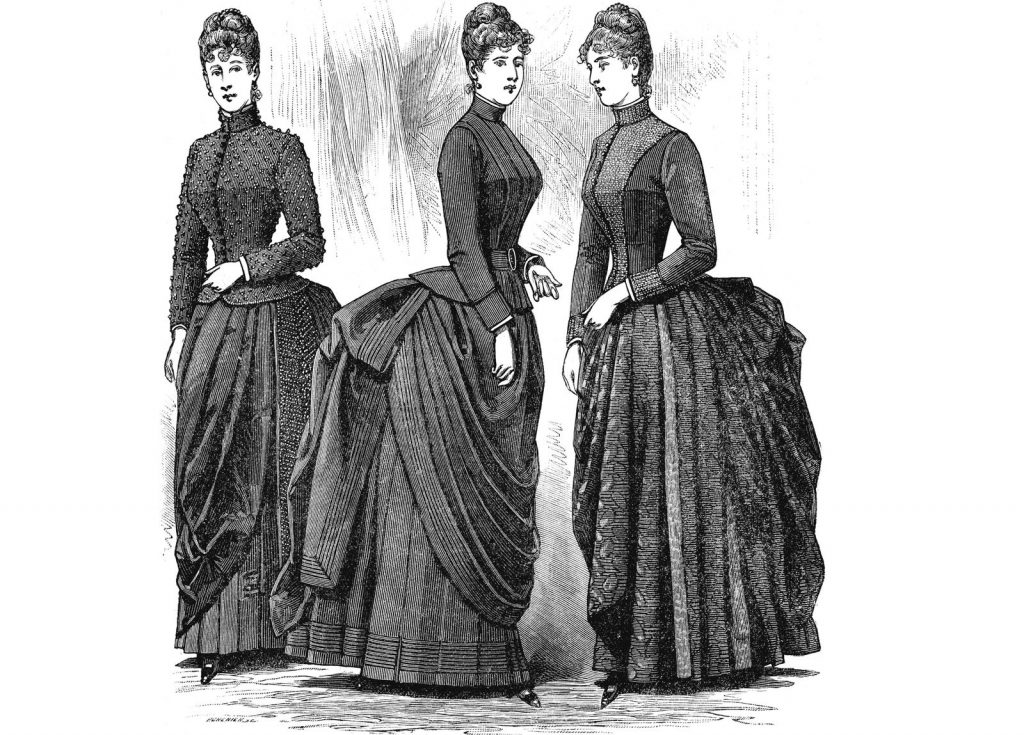
In the 1880s, women stop wearing bustles and crinoline. They started wearing a flared away skirt from their waist.
Hats
At that time, going out without a hat was not a proper manner. During that time, many women wore poke bonnets. Their poke bonnet featured a small crown and a wide rounded brim. At the end of the Victorian era, the hat had a wide brim, silk flowers, and ribbons. Some hat had exotic plumes or feathers and even a stuffed bird.
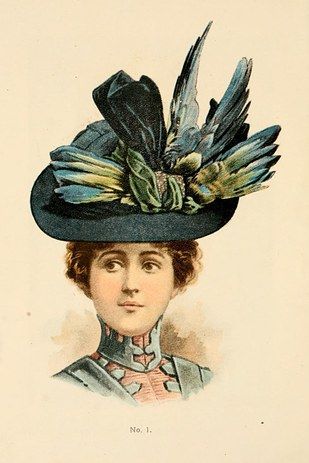
Shoes
At the beginning of the Victorian era, women wore narrow heelless shoes. The shoes got a little thicker during the 1850s. The heel was low. The shoe’s heel was either leather or a cloth-made heel. Some women also wore buttoned ankle length boot. During the 1870s, the shoe’s heel got higher and toes pointier.
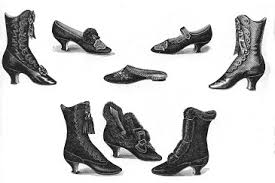
Victorian Men’s Costume
There is some useful information about upper-class men’s costumes. The information is not as elaborate as Victorian women’s costume. But it is enough to know what men wore each decade.
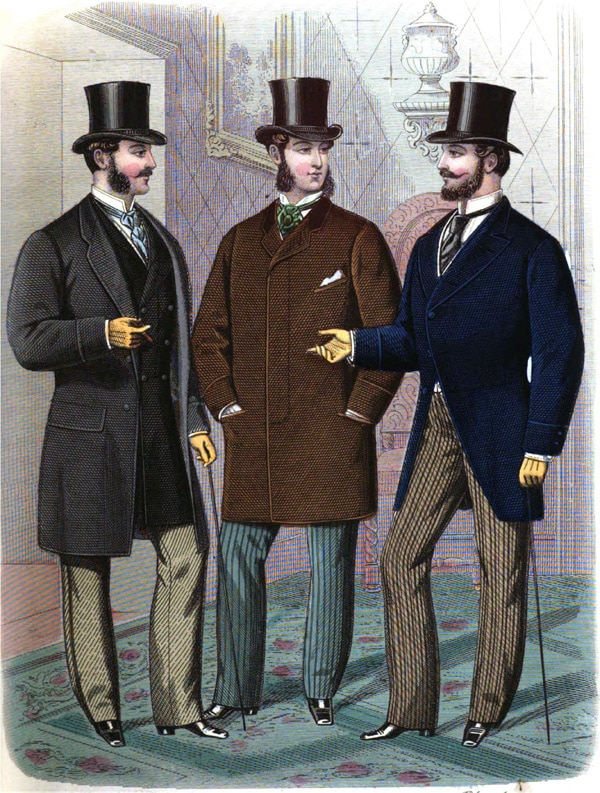
1840
Victorian suits were the common wear for victorian men. During the 1840s, men wore long frock coats. The coats were tight fit coats. They were around calf length. Under the coat, there was a vest. Most men wore linen or cotton shirts. The shirt’s collar was low. Some men wore a top hat. The hat had wide brims and protected the wearer from the sun.
1850
In this time, the collar design changed. The shirt then had a turnover collar. Some wore a bow or a necktie. The upper-class men used to wear a top hat.
1860
In the 1860s, men had different clothing for business and formal meetings. For the business meetings, they wore a short frock coat. For formal occasions, man used tight mid-length sack coats. The top hat became a stove pipe-shaped hat.
1870
During this time, Men wore a three-piece suit. The shirt was a patterned shirt. The frock and sack coats got even shorter. Some men wore ascot ties and neckties during the 1870s.
1880
During the 1880s, the formal evening dress was a dark tailcoat, trousers, and a dark vest. Men wore a white bow tie. The shirt had a winged collar. Men wore knee-length topcoats or calf-length overcoats during winter.
1890
In the 1890s, many men started to wear a blazer. The blazer became very popular. Men wore blazers during everyday activities like sailing and sports.
Victorian Children’s Costume
Both boys and girls under the age of five wore frocks. As a result, It was easier for the nannies to change children’s clothing.

Upper-class boys wore various types of outfits. Sometimes they wore tartan and sailor suits. Sometimes they wore a vest over a white linen shirt. Some boys wore straw hats and caps during that time.
The rich girls wore tailored made frock. As they became older, they started to wear a dress and skirt with layers and frills. The skirt length increased with their age. They wore buttoned-up boots and bonnets over their head.

Working-class people’s costume
The working-class or poor people’s costumes were much different. Those costumes were old and ragged. There is not too much information available on poor people’s costumes during the Victorian era.
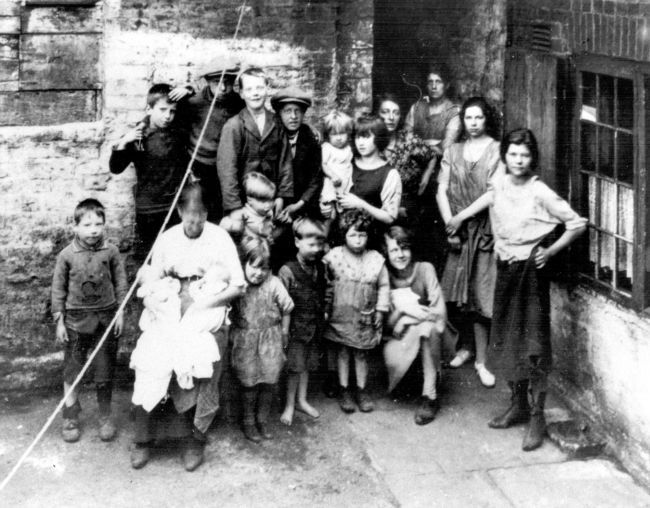
Women’s Costume
The poor women’s clothing was way too much different than the upper-class women. Their costume did not have any unnecessary layers, trims, and embroideries. The poor women’s costume was much practical and useful during their work. They wore a high neck bodice and a skirt. Both the bodice and the skirt were comfortable enough for easy movement and works.
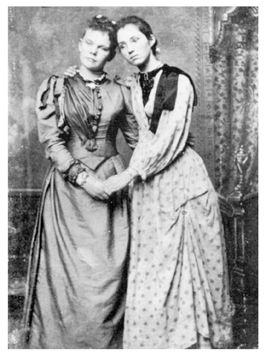
Men’s Costume
Poor men wore the similar-looking costume as the upper-class rich men. But their clothes were from second-hand shops. Most of the time, their cloth looked very old. During the Victorian era, the working-class men wore a blower hat.
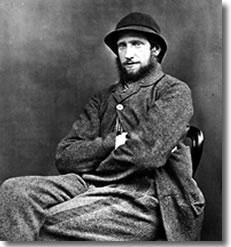
Children’s Costume
During the Victorian era, the poor children wore ragged old clothes. Most of their clothes are passed from their older siblings. Sometimes they resized the unused garments of their parents and siblings.

Conclusion
People will always remember the Victorian era for its architecture, economy, costume, and culture. But the thing people like most about that era is the Victorian costume. People still find these costumes elegant and majestic. And that is why people still talk about the Victorian era’s clothing.

